When you’re staring into those gorgeous blue eyes and feeling that silky fur under your fingers, you might think caring is simply about endless cuddles and photo opportunities. Yet beneath that docile exterior lies a complex companion with specific needs that deserve your attention. These gentle giants aren’t just oversized lap cats; they require thoughtful care that goes far beyond what you might expect from their laid-back demeanor.
Understanding your Ragdoll’s unique requirements will make the difference between a happy, healthy feline and one that struggles with preventable issues. From their surprisingly high social needs to their tendency toward weight gain, these cats bring both joy and responsibility into your life. Let’s dive into the essential knowledge you need to keep your Ragdoll thriving for years to come.
Understanding your Ragdoll’s unique personality and social needs
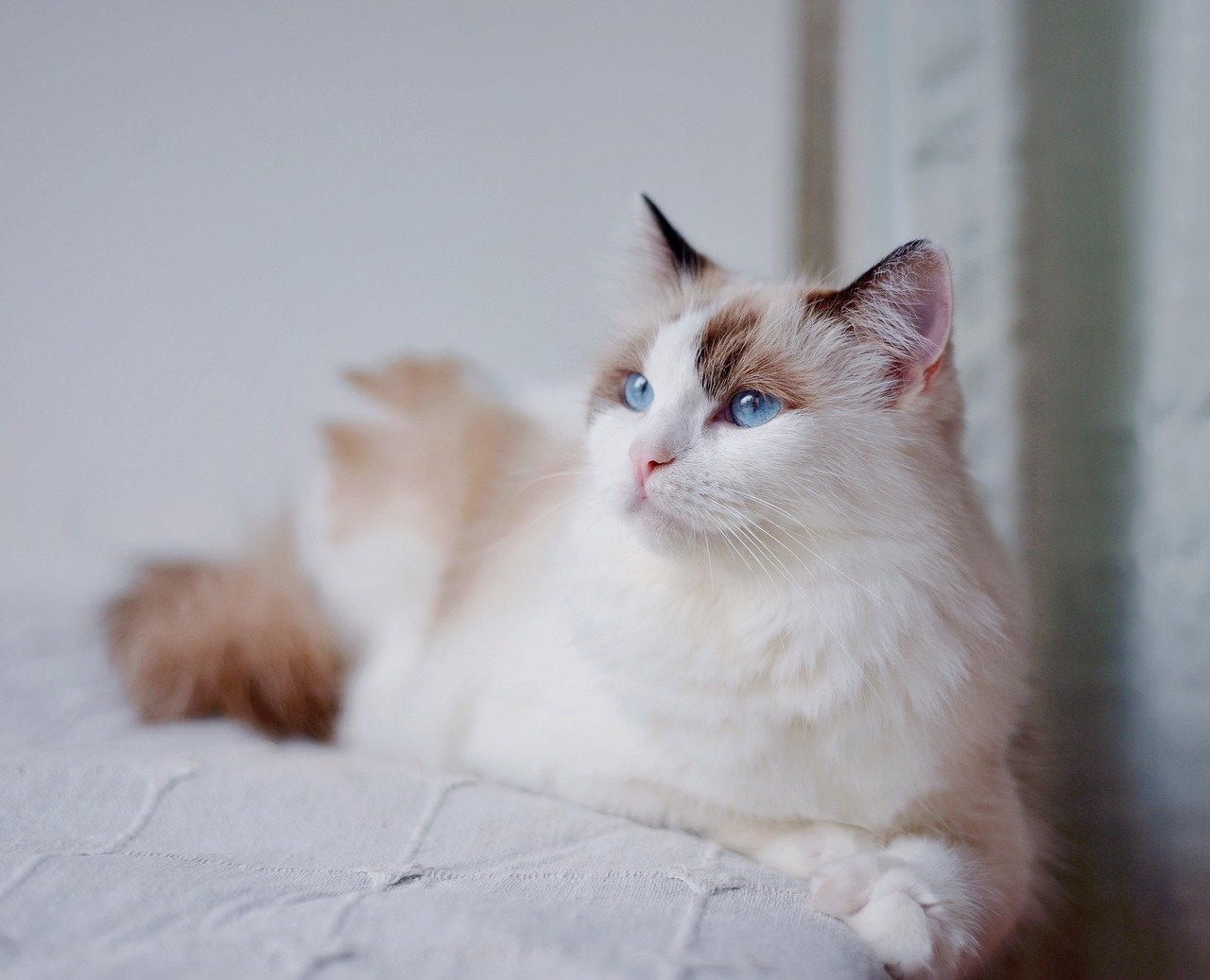
Your Ragdoll isn’t like other cats, and honestly, that’s exactly what makes them so special. These attention-seeking companions love spending time with their families and will likely follow you from room to room throughout the day. A Ragdoll will follow you around the house and jump in your lap the first chance they get, making them more like furry shadows than independent felines.
Unlike Russian Blues and other independent cats, the floppy cats don’t do well on their own. This means leaving your Ragdoll alone for extended periods can lead to anxiety and behavioral issues. The people-oriented nature of some Ragdoll cats makes them prone to being clingy or having separation anxiety. In this aspect, Ragdoll cats can be high-maintenance.
Ragdolls have advanced social intelligence and outstanding communicational skills that allow them to pick up on new tricks with ease. This breed can respond to basic voice commands with the eagerness of a Border Collie. You can actually teach your Ragdoll to play fetch, which makes playtime incredibly engaging for both of you.
Creating the perfect indoor environment for your Ragdoll
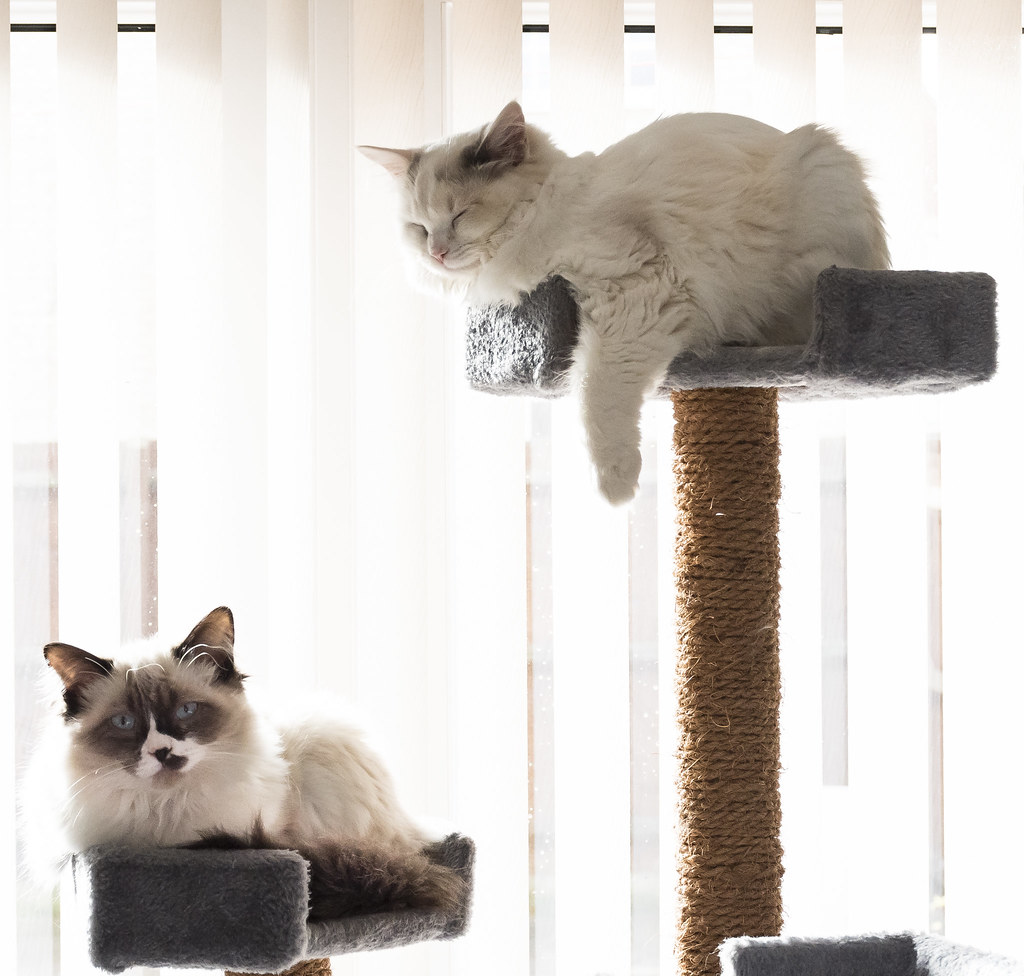
Ragdoll isn’t a mouser breed, so they’re best kept as indoor cats. The overly friendly felines are too trusting for the mean streets, which makes them easy targets. If you let your Ragdoll outside, they’re likely to get into an accident or get bullied by other animals. To be on the safe side, the gullible cats should stay at home.
Setting up your home requires some strategic thinking. You’ll need multiple scratching posts since stopping your kitten from scratching furniture requires getting at least 2 sisal scratching posts and encouraging them to use it by sprinkling catnip or using catnip spray every few days. Place these in high-traffic areas where your Ragdoll spends most of their time.
The friendly felines thrive in a safe familial environment with a steady routine. Looking after a Ragdoll cat involves daily playing sessions, socialising, and lots of tender loving care. Consider creating quiet retreat spaces where your cat can relax when they need some downtime.
Feeding your Ragdoll the right diet for optimal health
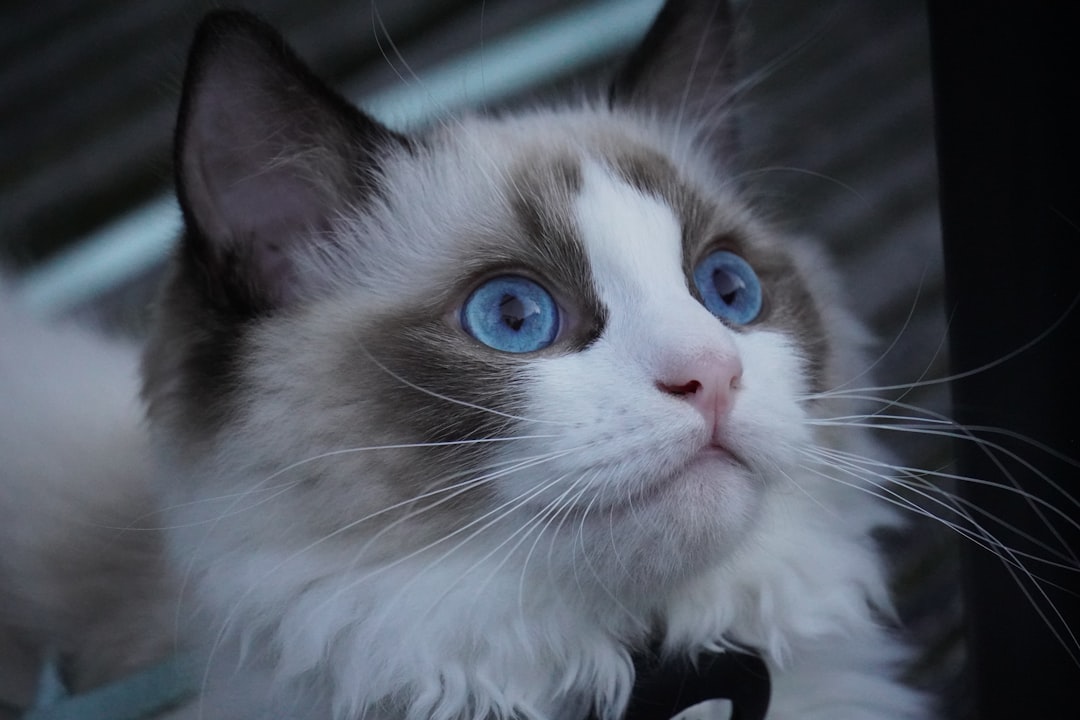
Nutritionists say a Ragdoll’s meals should replicate the nutrition profile of the natural feline diet, offering over 50% animal proteins, about 20% fats, and no more than 3% carbs. This high-protein approach supports their large frame while keeping them lean and energetic.
Ragdolls are prone to gastrointestinal and urinary tract issues like constipation, irritable bowel syndrome, bladder stones, cystitis, and chronic kidney disease – all conditions aggravated by a dry food diet. Most canned cat food products have over 75% moisture content, which keeps your kitty’s system hydrated naturally. Wet food also offers higher values of animal protein than biscuits.
Adult Ragdolls need about 20–25 calories per pound of body weight daily, which translates to approximately 1/2 to 3/4 cup of premium dry food or 5–6 ounces of wet food per day for the average 12–16 pound Ragdoll. For optimal hydration, consider feeding wet food as at least 50% of your Ragdoll’s diet.
Most Ragdolls do well on two standard cans in a day, but if your kitty is ginormous or gets regular exercise, they may need an extra can. In case you serve a mixed diet, a balanced daily menu would include at least one can of wet food and not more than 50 grams of dry food.
Grooming essentials for that luxurious Ragdoll coat
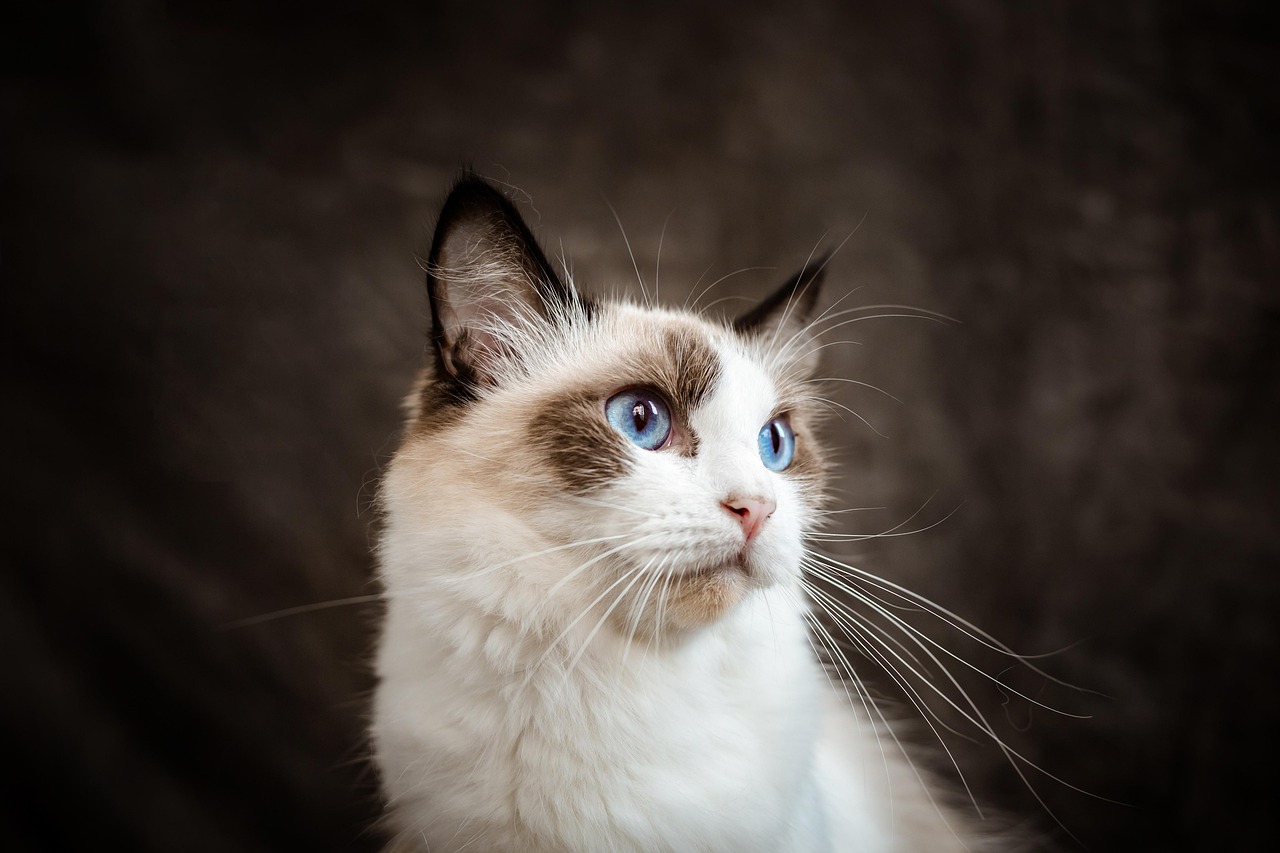
In terms of grooming needs, Ragdoll cats are considered only relatively low maintenance. While they do have a long coat, they do NOT have a dense undercoat. They tend to shed a bit all year round, with the majority of shedding occurring seasonally. This makes them easier to manage than you might expect from such a fluffy breed.
You should brush their hair twice a week to keep their mane soft and silky. It’s worth starting early on with grooming sessions so your ragdoll kitten can get used to the sensation. Use a slicker brush with soft bristles along with a comb for the best results.
When grooming your Ragdoll, start with the stomach & legs, then work your way to the back, head, and down to the tail. Don’t miss out on the difficult parts like behind the arms and the backs of the legs. Bathing them once a month is more than enough since they’re usually indoor cats and Ragdolls groom themselves pretty well.
Ragdoll parents should have two good metal combs at the ready: a larger one and a smaller, finer one. If you have a couple good combs and you comb your Ragdoll once or twice a week – possibly every couple days during spring shedding – you shouldn’t have problems with matts.
Nail trimming and basic grooming maintenance
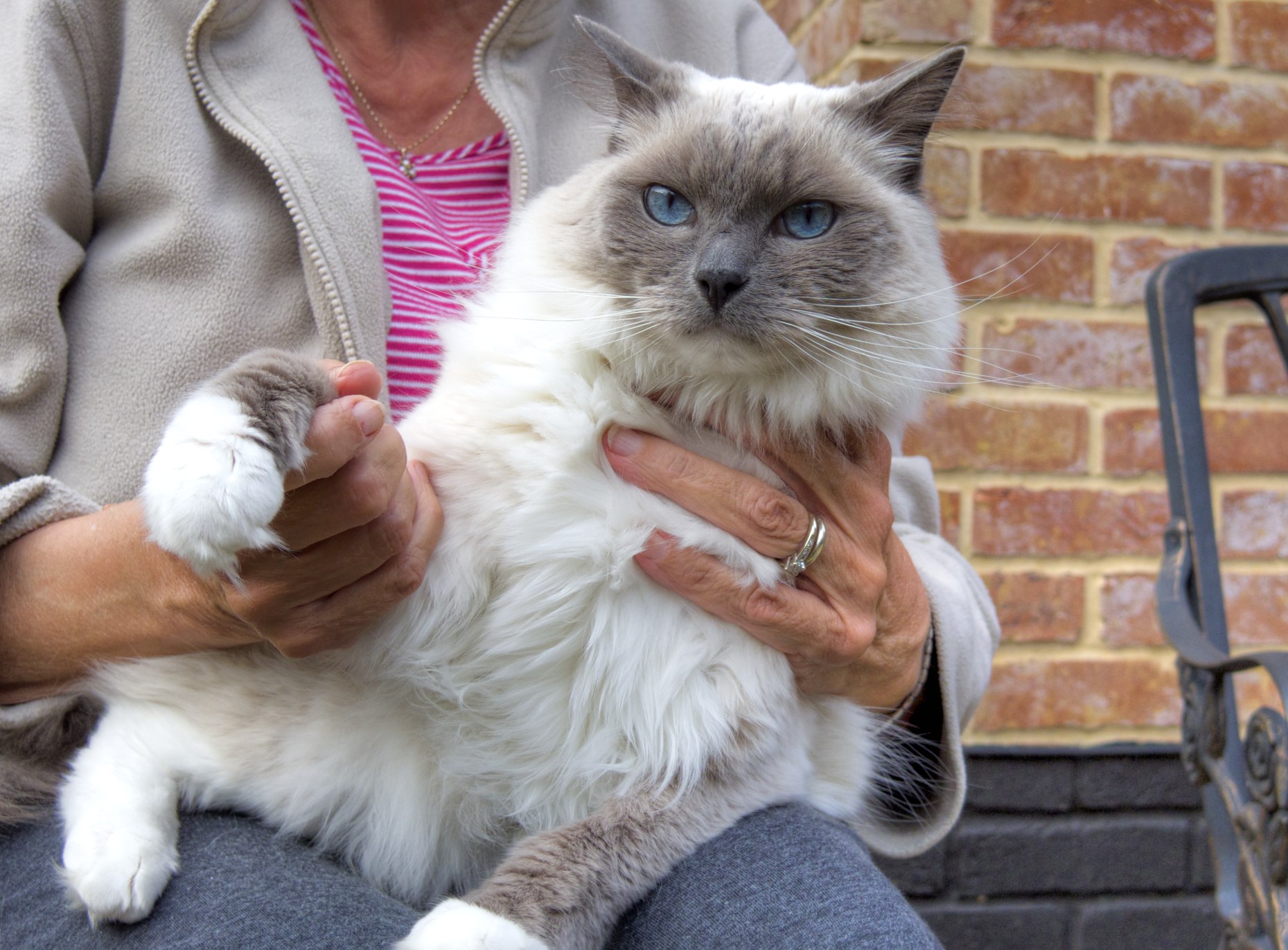
Claw trimming helps avoid painful scratches and tears. The frequency of trimming claws normally varies, mainly depending on your cat’s activity level, age, or how much cat furniture or scratching posts you have. On average, think of it as a bi-weekly manicure they didn’t ask for but definitely need.
To get started, hold your Ragdoll gently but firmly on your lap (First-time owners prefer to do this with two people, one to hold and one to trim). Gently squeeze the paw to get their claws out. Don’t force it if they aren’t fond of this idea. Trim off a small portion at a time, just enough so you can see pink in the center without cutting it. Be careful not to cut too much or you risk hurting them.
Regular ear and eye care is essential for keeping your Ragdoll healthy and comfortable. Check your cat’s ears weekly for signs of dirt, wax buildup, or infection. Use a cotton ball or pad with a gentle, vet-approved ear cleaner to clean the outer part of the ears. Avoid inserting anything into the ear canal to prevent injury.
For eye care, gently wipe away any discharge or tear stains using a damp cloth or a pet-safe eye wipe. Ragdolls can be prone to tear staining, so regular cleaning helps keep their eyes clear and healthy. If you notice persistent discharge, redness, or swelling, consult your veterinarian for advice.
Exercise and mental stimulation for your gentle giant
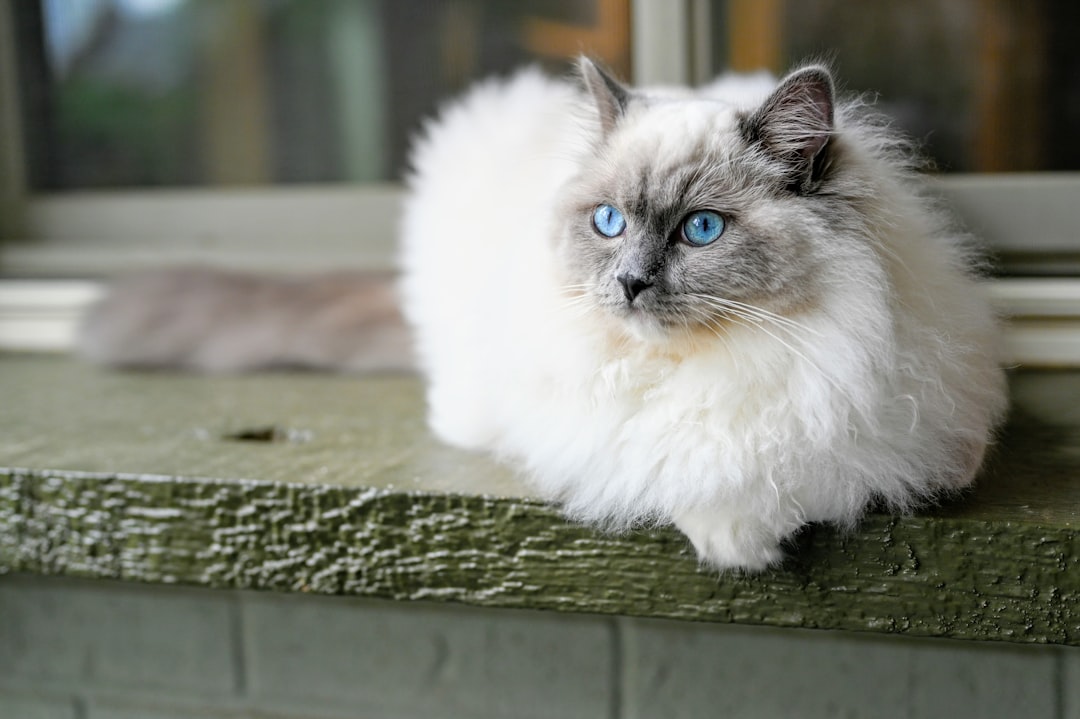
Ragdolls are fairly inactive, even by indoor cats’ standards. A sedentary lifestyle combined with an increased appetite often results in unhealthy weight gain. This means you’ll need to be proactive about encouraging movement and mental engagement.
Ragdolls are intelligent cats that benefit from mental stimulation. Provide a variety of toys, puzzles, and interactive games to keep your kitten’s mind engaged. Rotating toys regularly can keep things exciting and prevent boredom.
Spend quality time interacting with your kitten to help them become well-adjusted and confident. Engage them in play with interactive toys like feather wands, laser pointers, or small balls to stimulate their minds and keep them active. Playtime is not only essential for their physical health but also helps strengthen your bond with your kitten.
Playtime is an important part of caring . Besides providing entertainment, playing games also strengthens the bond between the kitty and their human. Remember that these cats actually enjoy interactive games and can even learn to play fetch like dogs.
Health monitoring and veterinary care requirements
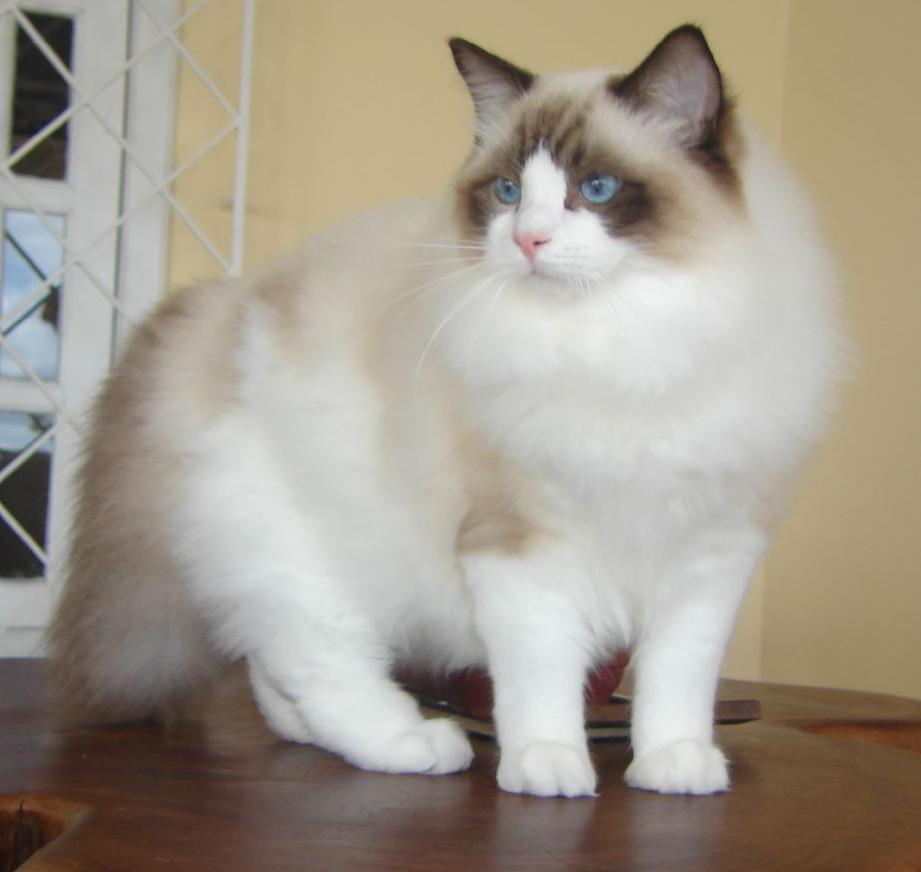
As a breed, Ragdolls are quite healthy, with an average lifespan of 13–18 years. With proper care, the friendly feline can last well beyond the expectancy. Despite their sturdy build, Ragdolls aren’t immune to genetic and acquired diseases. Like other pedigree pets, the gentle giants can struggle with certain disorders throughout their lives.
Common Ragdoll cat health issues include Hypertrophic Cardiomyopathy (HCM) – an inherited condition that leads to thickened heart muscles and can progress to heart failure if untreated, and Polycystic Kidney Disease (PKD) – where fluid-filled cysts can form in the kidneys, potentially leading to kidney failure.
Weight & Joint Problems are also concerns since Ragdoll cats tend to be docile and inactive if not encouraged to exercise through play. This can make them susceptible to weight gain and joint problems that result from excess weight.
Just like any cat breed, Ragdoll cats benefit from consistent preventative care including yearly or bi-yearly pet wellness exams, cat vaccines, heartworm preventives, dietary optimizations, enrichment tips, and more. Pet wellness exams with vets help you get personalized Ragdoll cat care, addressing both breed predispositions and individual health needs. These exams allow for early intervention for Ragdoll cat health issues, which in most cases can improve the prognosis.
Dental care and preventing common health issues

Maintaining your Ragdoll’s dental hygiene is crucial for their overall health. Regular brushing helps prevent plaque buildup, gum disease, and bad breath. Use a cat-specific toothbrush and toothpaste to brush your cat’s teeth at least a few times a week. Introduce the toothbrush gradually, allowing your cat to become familiar with it before attempting a full brushing session.
Ragdolls sometimes get bellyaches from the accumulation of hair in their intestines. Hairballs are the most common cause of gastrointestinal health problems in Ragdoll cats, but they can be minimised with grooming and healthy eating habits. Regular brushing significantly reduces the amount of hair your cat ingests during self-grooming.
Ragdolls are prone to obesity, a nutritional disorder that significantly affects their quality of life. The robust felines have a naturally large frame, so they tend to eat more than the average-sized cat. Ragdolls need regular exercise, low-calorie food, and controlled portions to stay fit.
Hydration is an often-overlooked but crucial part of Ragdoll cat care. Ensure your Ragdoll always has access to clean, fresh water. Ragdolls can be prone to kidney issues, so it’s important to encourage regular hydration. You can even consider using a cat-friendly water fountain that helps keep the water fresh and appeals to your cat’s natural instincts to drink from moving water.
Your Ragdoll’s wellbeing depends on understanding their unique blend of social butterfly personality and specific physical needs. These aren’t typical independent cats; they’re gentle companions who thrive on routine, quality nutrition, regular grooming, and plenty of human interaction. Yet the reward for this extra attention is immeasurable: a devoted friend who will literally go limp with contentment in your arms.
Taking care of a Ragdoll means embracing both their laid-back nature and their surprising need for engagement. From their high-protein diet requirements to their twice-weekly brushing sessions, every aspect of their care contributes to a longer, healthier life. What do you think makes the biggest difference in your Ragdoll’s happiness? Share your experiences in the comments below.





